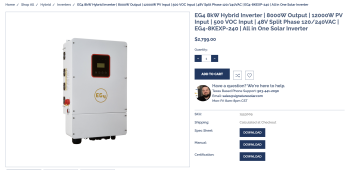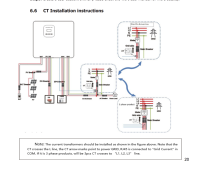carsantini
New Member
- Joined
- Apr 30, 2022
- Messages
- 84
Obviously, this inverter is manufactured by DEYE. Anyone that has this rebranded inverter or its variations that can provide some overall input?

 signaturesolar.com
signaturesolar.com


EG4 8kW Hybrid Inverter | 8000W Output | 12000W PV Input | 500 VOC Input | 48V Split Phase 120/240VAC | EG4 8KEXP-240 | All in One Solar Inverter
Signature Solar provides solar panels, off-grid solar systems, grid-tie, and hybrid systems. Quality solar inverters, bifacial solar panels, complete solar kits, solar batteries. Featuring brands such as EG4 Electronics with their solar battery, LifePower4 and EG4 LLifePower4 and EG4 LL
 signaturesolar.com
signaturesolar.com







